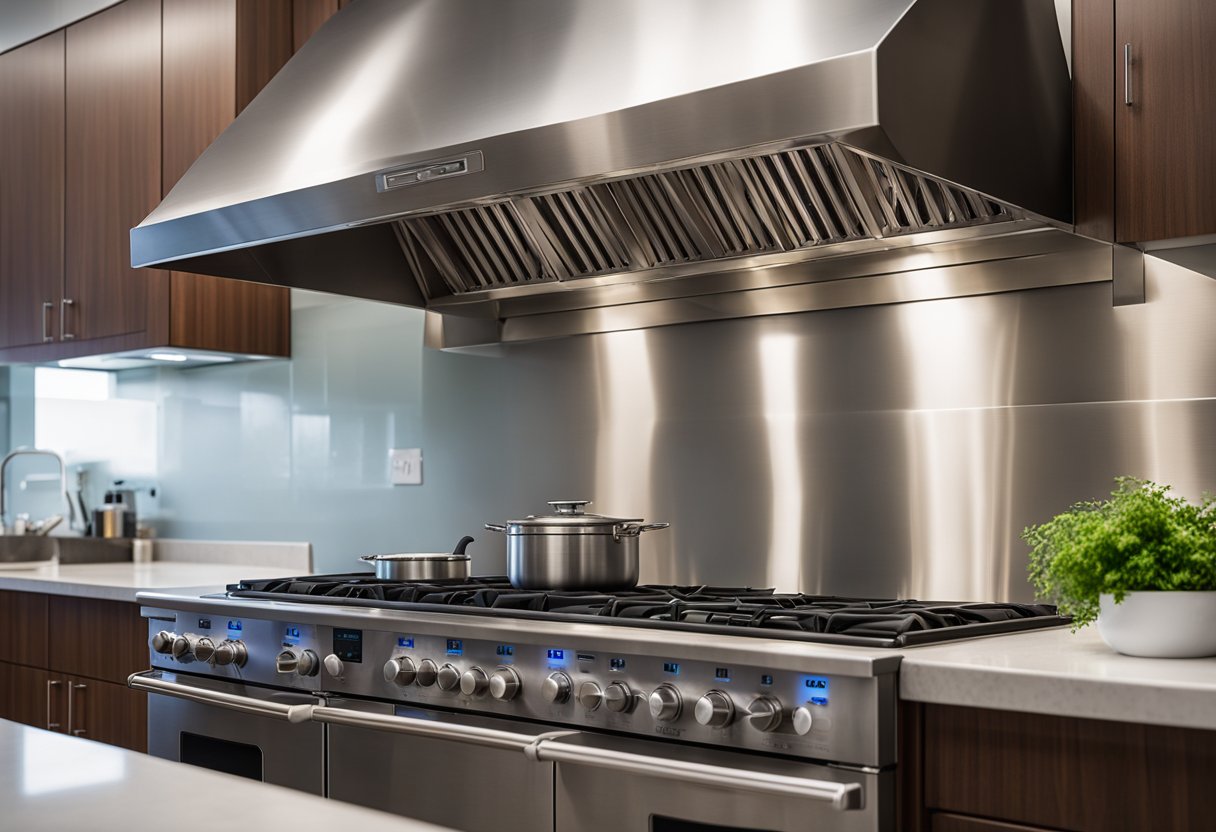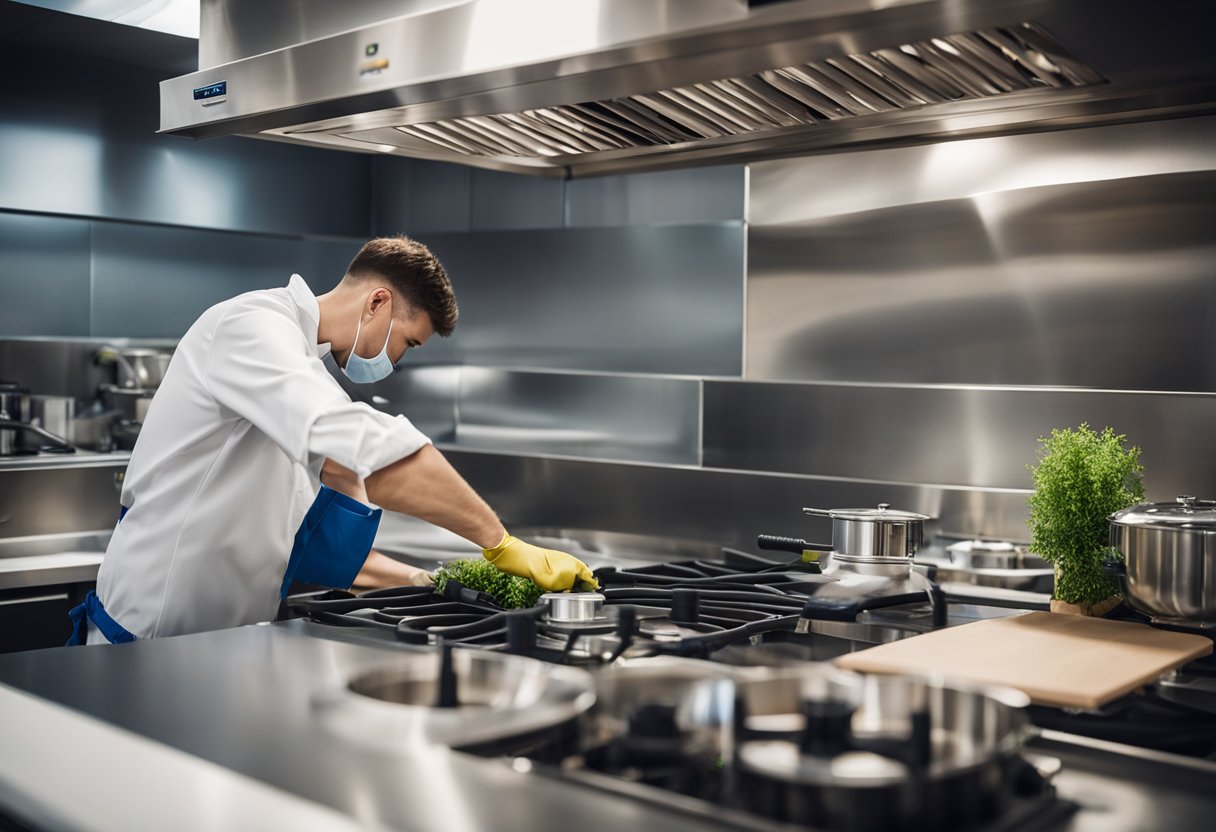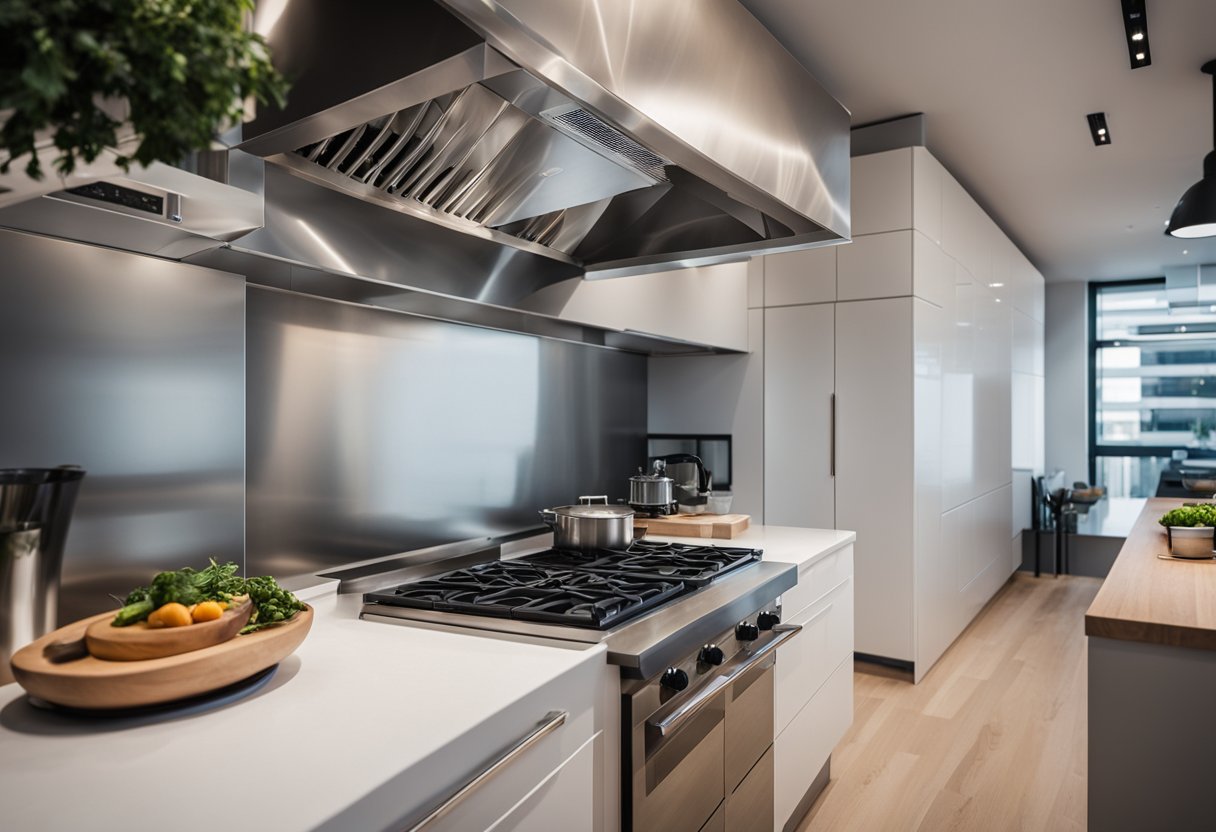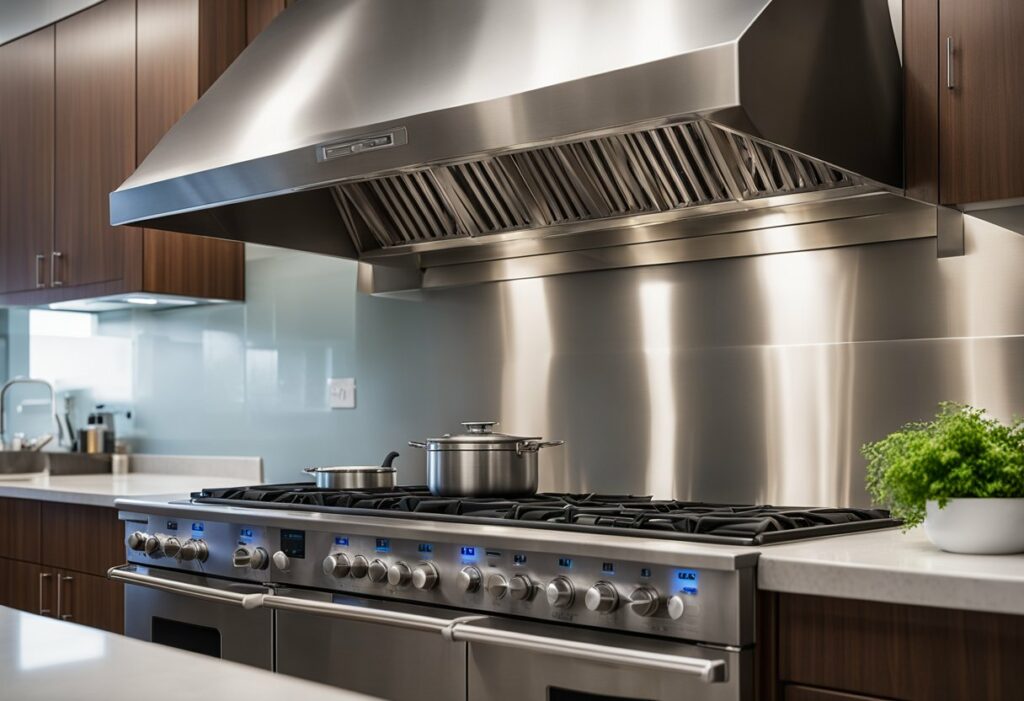Kitchen Ventilation System Design: The Key to A Clean and Healthy Kitchen
Proper kitchen ventilation system design is essential for maintaining a healthy and comfortable environment in your home. By effectively removing smoke, odours, and airborne grease particles, a well-designed ventilation system can significantly improve indoor air quality, making your kitchen a more pleasant place to cook and socialise. When planning the design of your kitchen ventilation system, it’s crucial to consider factors such as the size and layout of the kitchen, the type of cooking appliances you use, and the overall airflow requirements.

Additionally, understanding the principles of kitchen ventilation system design is vital for ensuring that the system operates efficiently and effectively. By implementing the correct design principles, you can optimise airflow, minimise energy consumption, and reduce the risk of indoor air pollution. Proper installation, operation, and maintenance of your kitchen ventilation system are also key to its long-term performance and your overall satisfaction with the system. Regular cleaning and upkeep will help to maintain optimal air quality and ensure the system operates at its best.
Key Takeaways
- Effective kitchen ventilation system design is crucial for maintaining a healthy and comfortable indoor environment.
- Understanding the principles of kitchen ventilation system design is essential for ensuring efficient and effective operation.
- Proper installation, operation, and maintenance are key to the long-term performance of your kitchen ventilation system.
Design Principles of Kitchen Ventilation Systems

When it comes to designing a kitchen ventilation system, it’s essential to consider various factors to ensure an effective and efficient setup. Here are some key principles to keep in mind:
Assessing Ventilation Needs
Before diving into the specifics, it’s crucial to assess the ventilation needs of your kitchen space. Consider the size of the kitchen, the type of cooking equipment being used, and the heat load generated during cooking. Assessing these factors will help determine the appropriate ventilation rate and airflow required to maintain a comfortable and safe environment.
Selecting the Right Ventilation Equipment
Selecting the right ventilation equipment is vital for maintaining a healthy indoor air quality. This includes choosing suitable filters, blowers, and ductwork to effectively remove kitchen pollutants and maintain proper airflow. Consider the mounting height of the hood, the use of air purifiers, and the incorporation of energy-efficient components to enhance the overall performance of the system.
Incorporating Energy Efficiency and Sustainability
Incorporating energy-efficient and sustainable elements into your kitchen ventilation system is not only beneficial for the environment but can also lead to cost savings in the long run. Explore options such as demand control kitchen ventilation (DCKV), fresh air and makeup air systems, and the use of short-circuit hoods to maximise energy consumption while adhering to standards such as ASHRAE Standard 154. Additionally, consider commissioning and regular maintenance to ensure optimal performance and longevity of the system.
By carefully considering these design principles, you can create a kitchen ventilation system that effectively controls kitchen pollutants, ensures a healthy indoor environment, and minimises energy consumption.
Installation, Operation, and Maintenance

Proper installation, operation, and maintenance of your kitchen ventilation system is crucial to ensure optimal performance, safety, and compliance with regulations. In this section, we will cover the key procedures and best practices for each of these areas.
Professional Installation Procedures
When it comes to installing your kitchen ventilation system, it is essential to hire a professional who is experienced in this type of work. A professional installer will ensure that your system is installed correctly and in compliance with all relevant regulations, including ANSI/ASHRAE Standard 154. They will also help you choose the right equipment for your specific needs and ensure that it is installed in the optimal location to maximise efficiency.
Routine Maintenance and Upkeep
Routine maintenance and upkeep are essential for keeping your kitchen ventilation system running smoothly and efficiently. This includes regular cleaning of the exhaust hood, range hoods, and exhaust fan to remove pollutants, odours, and smoke. You should also check windows and doors to ensure they are properly sealed to prevent the entry of outdoor pollutants, including nitrogen dioxide and particulates. Regular maintenance can also help prevent fire hazards by ensuring that flues and ducts are clear of debris.
Troubleshooting Common Issues
Despite regular maintenance, you may still experience issues with your kitchen ventilation system. Some common issues include fan noise, inadequate exhaust volume, and unpleasant cooking odours. If you experience any of these issues, it is important to troubleshoot them promptly to prevent them from becoming more serious. This may involve adjusting the hood fan or installing additional ventilation equipment, such as downdraft fans or island hoods.
Overall, installing, operating, and maintaining a kitchen ventilation system can be a significant investment, but it is a necessary one to ensure the safety and health of your staff and customers. By following the best practices outlined in this section, you can maximise the efficiency and lifespan of your system while minimising operating costs and compliance risks.
Frequently Asked Questions

What are the top considerations for efficient kitchen exhaust duct design?
Efficient kitchen exhaust duct design is essential for maintaining a safe and comfortable kitchen environment. The top considerations for efficient kitchen exhaust duct design include the type and quantity of cooking equipment, the size and layout of the kitchen, and the type of exhaust system. Proper duct sizing, hood placement, and air balance are also critical factors to consider.
How can one ensure compliance with ASHRAE standards in kitchen ventilation?
ASHRAE standards are essential to ensure that kitchen ventilation systems are safe, efficient, and effective. Compliance with ASHRAE standards can be achieved by following the guidelines outlined in the ASHRAE Handbook, which covers everything from ventilation rates to ductwork sizing and design. It is also essential to work with experienced and qualified professionals when designing and installing kitchen ventilation systems.
What’s the most effective way to calculate the necessary ventilation for a kitchen space?
The most effective way to calculate the necessary ventilation for a kitchen space is to use the ASHRAE Standard 62.1-2019. This standard provides guidelines for determining the minimum ventilation rates required for different types of kitchen spaces, based on the size of the space, the type and quantity of cooking equipment, and the number of occupants. It is also essential to consider the local building codes and regulations when calculating the necessary ventilation for a kitchen space.
Could you highlight the essential requirements for a small kitchen’s ventilation system?
Small kitchens require ventilation systems that are efficient, effective, and easy to maintain. The essential requirements for a small kitchen’s ventilation system include proper hood placement, ductwork sizing, and air balance. It is also essential to choose the right type of exhaust hood for the cooking equipment being used and to ensure that the ventilation system is properly maintained and cleaned.
What innovative approaches are there for integrating windows into kitchen ventilation solutions?
Integrating windows into kitchen ventilation solutions can be an effective way to improve air quality and reduce energy costs. One innovative approach is to use a window-mounted exhaust fan, which can be installed directly into the window frame. Another approach is to use a window-mounted ventilation hood, which can be attached to the window frame and used to exhaust air from the kitchen.
How does one go about constructing a robust kitchen ventilation system from scratch?
Constructing a robust kitchen ventilation system from scratch requires careful planning and attention to detail. The first step is to determine the type and quantity of cooking equipment that will be used in the kitchen and to choose the appropriate type of exhaust hood. Next, the ductwork sizing and design should be carefully considered, and the ventilation system should be properly balanced to ensure that the air is flowing correctly. Finally, it is essential to work with experienced professionals and to follow all local building codes and regulations to ensure that the kitchen ventilation system is safe and effective.



